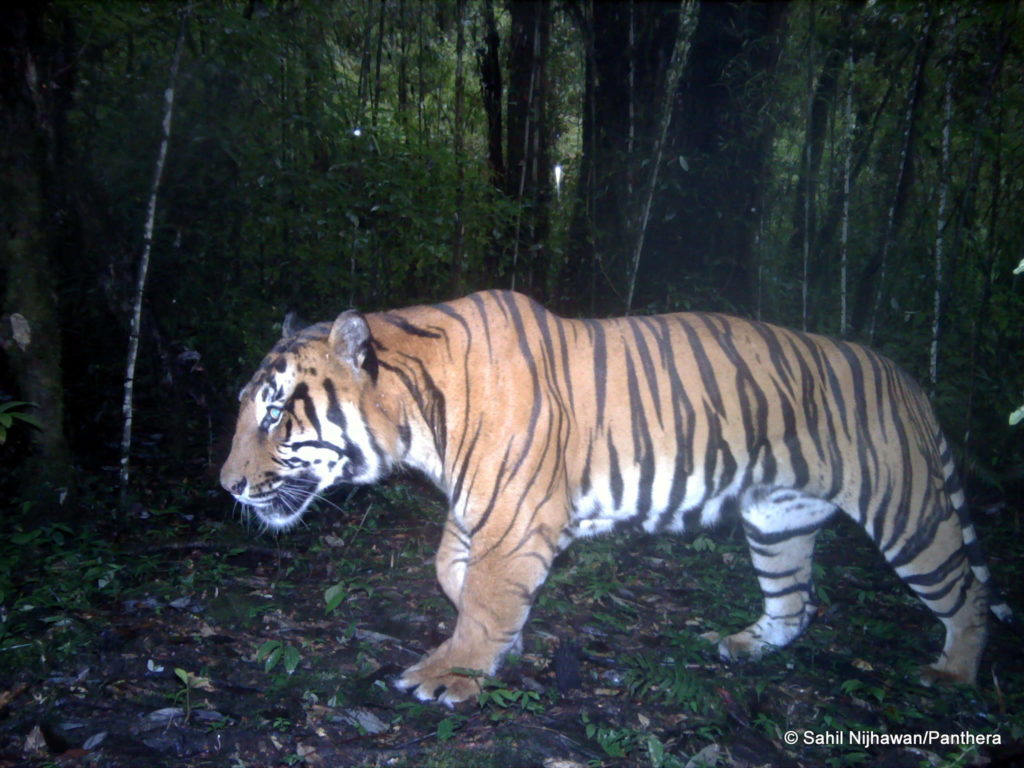


Project name: Tigers, dams and tribal cultures in Arunachal Pradesh
Location: Arunachal Pradesh, India
Goal: To assess the tiger and prey population in an area under threat from development. This study is part of a wider project to gain understanding of the role of culture and local institutions in tiger conservation within the context of India’s environmental and development policies.
Objective 1: Assess the tiger population density in the Dibang Valley
Objective 2: Assessing the density of large ungulates in the Dibang Valley
Objective 3: Analysis of the impacts of impending dam construction on tigers in Dibang Valley.
Background:
In Northeast India, tigers have been reported to roam the high Himalayan Mountains. This project has collected tiger and prey population data in the tribal state of Arunachal Pradesh, an area which up until now has been relatively data deficient.
Arunachal Pradesh, meaning ‘the land of the rising sun’, is bordered by Bhutan, Tibet and Myanmar on three sides. This unique region is culturally, ecologically and administratively closer to its frontier neighbors than the rest of mainland India.
The region is the traditional homeland of the animic Idu Mishmi community. It spans 9500 km 2 and with an estimated population of 7900, is the least populated district in India.
Typical Idu lifestyle involves small-scale shifting agriculture supplemented with hunting and gathering, and occasional aid from state agencies. Large bodied animals are hunted and consumed under a strict system of taboos and ceremonies that are linked to the idea of cosmic retribution. Idus rear a semi-domesticated form of wild gaur, locally called ‘mithun’. Mithun is a ceremonial animal that is not used for dairy, meat or draught and is allowed to free-range in the mountains.
Idu cosmology holds the tiger in special kinship to man. Killing tigers is equated to murdering one’s own brother and is strictly prohibited in the Idu society. Recent surveys conducted as a part of this research have gathered evidence of tigers in the district in addition to reports of tiger predation on mithun.
The story of the tiger in this valley is complicated by another factor. The rivers in the district will be harnessed for several proposed mega-hydropower projects that are projected to cause loss of forest, displacement of local livelihoods and sudden cultural change. This research investigates whether there are cultural practices, social and historical factors, and, informal institutions that have directly or indirectly helped protect tigers in the valley. To exist, tigers need freedom from human persecution and availability of forest habitat and prey species. Therefore, the research explores the influence of cultural norms on tigers, its habitat and prey base separately.
The first year of this study, with funds from 21st Century Tiger, collected prey and tiger camera trap data. In 2016 the camera trap photos are being analysed.
